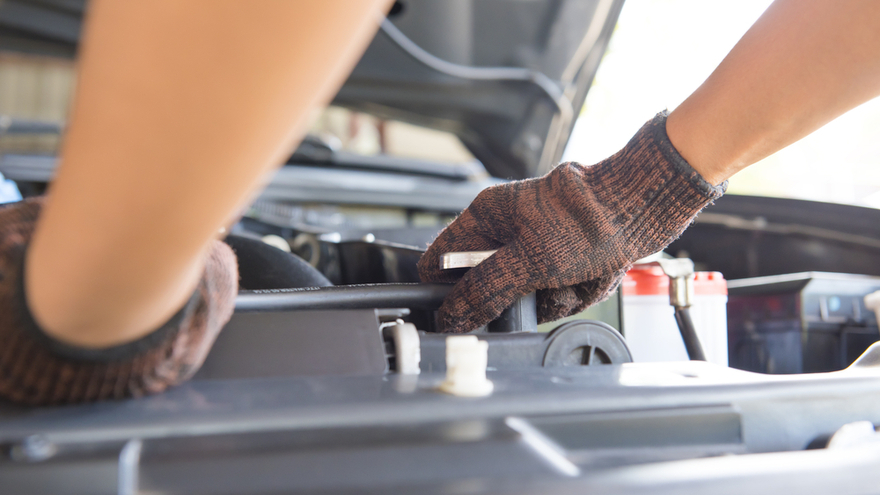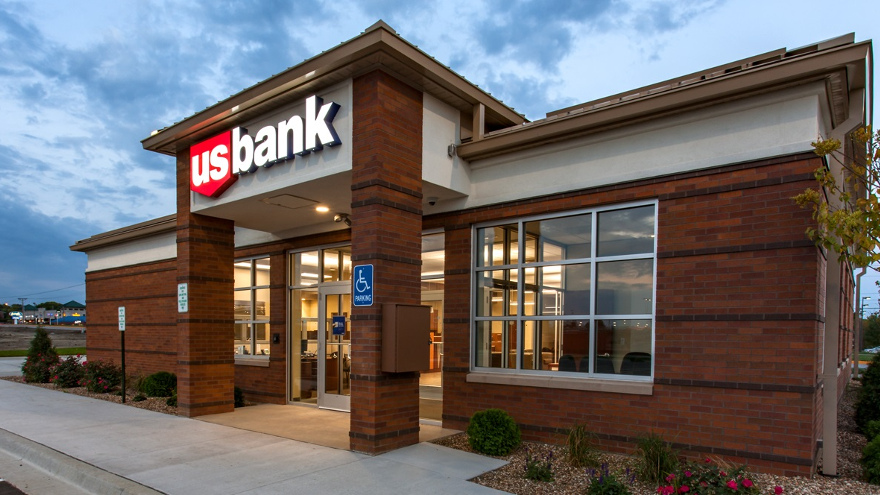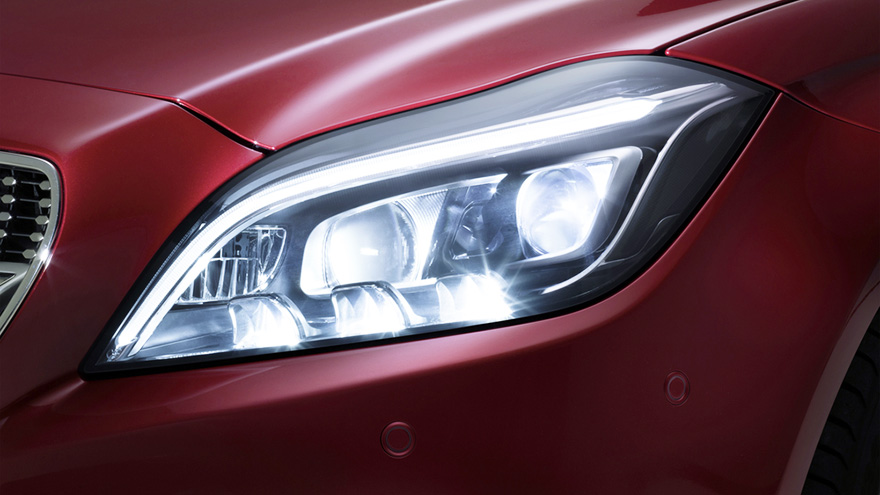Affinitiv announced Monday the release of its new free eBook for auto dealers, titled Why Service Absorption is a Dangerous Number: An Auto Dealer’s Guide to Growing Service Revenue Using Revenue per Units-in-Operation.
The eBook presents a detailed guide on how dealers can grow service profits using revenue per units-in-operation (UIO). And stresses why dealers should use revenue per UIO to guide their service revenue growth strategy over the service absorption metric.
“Service absorption is dangerous because it doesn’t measure a store’s achievement relative to its potential. Your service department can be at 100 percent service absorption but still be losing market share,” Affinitiv chief executive officer Scot Eisenfelder said in a news release. “Using revenue per UIO as a metric forces effort on activities that grow market share and increase customer retention.”
For dealers focusing on growing service department revenue, Affinitiv said the best metric to measure and track increase market share and increase service yield from current customers is revenue per UIO.
“A focus on maximizing revenue per UIO creates a fundamentally different strategic and operating mindset where the dealer does not concede any revenue to the aftermarket,” said Eisenfelder. “When dealers calculate their revenue per UIO it’s an eye-opening experience, and not necessarily in a good way.”
Using revenue per UIO as a metric provides dealers with a better understanding of their strengths and weaknesses because it more accurately represents a service department’s valid potential, according to the Affinitiv.
To download the free eBook, click here.
The newest dealer survey from KeyBanc Capital Market showed the opening month of 2018 was a fruitful one for dealerships’ used-vehicle departments.
According to the results shared Friday, the majority of respondents — 75 percent to be exact — continued to report increasing used-vehicle sales in January.
“We are anticipating a low single-digit used-car volume increase in 2018, driven by positive unemployment trends and continued improvement in off-lease supply,” KeyBanc analysts said.
And closely tied to used vehicles, the survey highlighted that dealerships are enjoying a robust start within their service drives, too.
The survey again showed the majority of respondents — this time 69 percent — continued to report increasing parts and service revenue, maintaining a positive trend in this segment.
“We maintained our low to mid-single-digit P&S revenue growth outlook into 2018, in line with the 2017 trend driven by increasing zero to 7-year-old vehicles, increasing used-vehicle sales that drives reconditioning work into bays and favorable warranty trends,” analysts said.
KeyBanc noted that positive used vehicle and P&S revenue trends should offset a “modest” 0.8 percent year-over-year pullback in new-vehicle sales volume.
“We are maintaining our full-year 2018 outlook of a 2 percent, or 16.8 million vehicles, in line with the midpoint of consensus SAAR range of 16.5 million to 17.0 million units,” analysts said.
No matter whether the stores are turning used vehicles or new models, the KeyBanc report pointed out that overall auto financing and subprime financing availability continued to contract slightly. Analysts added the trend “is not unusual at peak of the cycle, but credit availability remains well aligned with demand.”
And when it comes to gross profit, the KeyBanc survey showed a mix bag of trends.
When it comes to F&I gross profit, 46 percent of survey respondents reported intact gross per unit while another 38 percent reported an increase of about $50 year-over-year.
For gross on used vehicles, about the same number of responding dealers posted a rise of least $50 per unit in January as the ones that sustained a drop of about $50 per unit to open 2018.
CDK Global announced Thursday the release of its new cloud-based DMS — CDK Drive Flex DMSaaS.
Along with user-friendly features, Drive Flex includes a pricing model that adapts to the unique business needs of dealers operating one or two locations.
“CDK Drive Flex is an innovative web-based DMS perfect for dealers with just one or two locations,” CDK Global chief executive officer Brian MacDonald said in a news release. “The system introduces a groundbreaking commercial model that adapts to the individual dealer’s business activity. We’ve been developing this solution for some time and know it will help smaller dealers who really need this kind of solution for managing their businesses,” MacDonald explained.
Rather than having a fixed monthly amount due regardless of business activity, Drive Flex pricing adjusts with each dealer’s business volumes for enhanced cash flow and margin control.
“Using three common metrics—sales, system users and repair orders—pricing adjusts to volumes with a clear line of sight for business planning and growth,” CDK Global said.
Additionally, Drive Flex customers can access the core insights they need from virtually any browser or internet-connected device.
The DMS provides real-time business insights based on operational management reporting that leverages CDK Executive Eye technology.
In addition to having a simplified, modern user interface, Drive Flex’s 256-bit encryption technology increases data protection and is available on Amazon Web Services.
For a Drive Flex demonstration, dealers can visit booth 2216 at the NADA Show in Las Vegas from March 22 to 25.
U.S. Bank is now is leveraging the same technology from AutoGravity being deployed by an array of captives.
U.S. Bank recently launched a digital offering on its website that allows consumers to shop for a new vehicle and get pre-approved for financing, all before actually stepping foot in a dealership.
U.S. Bank’s digital financing platform is currently available via the U.S. Bank website for those individuals looking to buy a new vehicle through dealerships served by U.S. Bank. It will expand to the bank’s mobile app and be available to used-vehicle buyers and co-applicants in the coming months.
Working with AutoGravity, U.S Bank created a new platform on USBank.com that can provide a simplified, streamlined loan application process for users that typically takes just minutes to receive an approval decision.
Potential buyers using the new U.S. Bank tool simply:
1. Pick their car and select a dealership online.
2. Apply for a pre-approval for U.S. Bank auto financing online.
3. Close the vehicle installment contract at the dealership, and drive off in their new car.
“We want our customers — both car buyers and dealerships — to have the best, most seamless experience possible,” said John Hyatt, executive vice president of consumer dealer services for U.S. Bank. “This technology helps us get the buyer in the driver’s seat sooner and brings pre-approved customers to the dealership.”
Besides saving consumers time, the new technology improves customers’ overall car-buying experience by providing them with pre-approved loan terms going into the dealership.
“Together, AutoGravity and U.S. Bank have taken the first step on a journey to revolutionize the digital car-buying experience, empowering U.S. Bank’s customers to finance their next car in minutes, anytime and anywhere they want,” said Andy Hinrichs, founder and chief executive officer of AutoGravity.
If the latest projections from Edmunds are any indication, look for an improvement in retail used-car sales this month.
Edmunds expects February will end with 3.5 million used-car sales, which would beat January’s 3.1 million pre-owned sales.
That would translate to a seasonally adjusted annualized rate of 39.1 million used cars, up from the 38.9-million SAAR seen last month.
Over at Cox Automotive, the company said in its February Industry Update released two weeks ago that it still is anticipating 39.5 million used-car sales this year, despite a 2-percent year-over-year decline in used sales during the first month of the year.
Nothing that January’s dip “does not materially change the forecast,” Cox Automotive said in the report: “Now that used-vehicle pricing is back to pre-hurricane levels, used sales should pick up momentum for a strong March and April.”
That would perhaps help continue a trend spotted by now retired former Cox Automotive chief economist Tom Webb.
Webb, citing earnings from the companies, said in a tweet Tuesday that same-store used retail unit sales increases for the publicly traded dealer groups have climbed in 33 of the past 34 quarters — albeit with increasingly softer margins.
One of those publicly traded groups is Sonic Automotive, which released quarterly results Tuesday morning and emphasized the momentum in its standalone used-car retail stores.
Sonic’s EchoPark stores enjoyed nearly a 167-percent spike in sales for the fourth quarter, executive vice president of operations Jeff Dyke said in a news release.
“We sold over 10,600 units for the year with nearly 4,500 units retailed in the fourth quarter as our business model is accelerating volume at a rapid pace. This represents a 100-percent increase in volume for EchoPark year-over-year,” Dyke said.
“We expect our EchoPark brand to sell in the range of 25,000 cars in 2018, more than doubling 2017 volume,” he said. “In just a few years, the EchoPark brand has become nearly 20 percent of Sonic’s total pre-owned volume, and, given the volume increase we are experiencing with our model, we fully expect EchoPark to eclipse the volume we currently produce in our Sonic franchised dealerships over the next few years.”
The provider of a unique marketing solution that creates personalized direct mail using real-time consumer activity — PebblePost — recently announced that it has appointed new vice president Richard Flynn to grow its automotive vertical.
In an environment where the digital age has changed how consumers are often marketed to, the company aims to combine the power of connecting online with that of direct mail through its Programmatic Direct Mail solution.
Flynn brings over 20 years of experience with the auto ad business and has held previous positions at both AOL and Sports Illustrated.
“Rich is a master at understanding the customer and their business,” Pebble Post chief growth officer Geoff Dodge said in a news release announcing Flynn’s hire in January.
“His depth of knowledge of the auto vertical — having worked with Ford, Chrysler and General Motors, to name a few — is invaluable as he builds our go-to-market strategy for these marketers hungry for innovation,” he continued.
In a crowded media landscape like we see today, Flynn believes that Programmatic Direct Mail can be a changemaker for automotive business looking to reach consumers and move more metal.
He says that direct mail marketing allows dealers to pursue consumers in a way that will rise above the noise they often receive online.
Effective frequency
Now that traditional channels are not as large or arguably as effective as they used to be, Flynn suggests that when it comes to marketing on the dealer side of the auto industry a lot of noise locally can turn off consumers.
“Frequency is always a concern for dealers. How do you weigh too much versus too little in today’s marketing mix?” Flynn told Auto Remarketing by email earlier this this month.
“The challenge is heightened when you consider how many messages are out there already, every day, from search and social to display retargeting and traditional methods like direct mail. Consumers have developed an ad blocker muscle that can’t be ignored, so it’s important for dealers to remember that more isn’t always better if it leads to noise that’s easily tuned out,” he continued.
In addition to being designed to pick up on dealer website visitors and recognize whether or not an individual is an existing customer or prospect, Flynn says that PebblePost’s patent-pending digital platform provides dealers an option to connect with customers and leads that is relevant, personal and respectful.
The solution blends segmentation, campaign management, production, analytics and optimization. Its tools include: Campaign Management, Address Graph, Dynamic Production, Real-Time Analytics and Continuous Optimization and Intent Data Capture, which picks up real-time visitor signals, such as page visits, keyword searches, cart abandonment and behavioral activity.
“PebblePost’s Programmatic Direct Mail platform offers dealers a relevant, personal, and respectful way to communicate with existing customers — come back to the lot for service, e.g. — and most intriguing, connect with new prospects,” said Flynn.
“The latter are potential customers already visiting the dealer’s website — driven there by some call-to-action — but the dealer doesn’t know who they are. Our Website Prospect Remarketing solution picks up on that signal. We recognize that someone is not a customer, but a prospect. Then we leverage our proprietary technology to create connections between an individual visiting a website via a cookie and where to send the mail and find their postal address,” he continued.
To inform dealers where to send the mail and find car shoppers’ postal addresses, the Address Graph tool determines the most accurate USPS-verified postal address for a segmented customer.
“You have this tangible reminder in the prospect’s home urging them to visit the lot,” Flynn explained.“That impression doesn’t disappear like a display ad — it picks up more eyeballs in the home as that purchase is discussed. If you think of the enormous pressure on dealers to create new business, Programmatic Direct Mail can be a real game-changer for their bottom line.”
Group 1 Automotive is looking for new-car dealership “opportunities” in the United States, United Kingdom and Brazil markets, the company said during its recent quarterly conference call.
And as far as the standalone used-car store concept that has become increasingly popular, Group 1 chief executive officer Earl Hesterberg said his company has looked at the pre-owned stores “quite a bit.”
But he also noted that competitors Asbury Automotive Group, Lithia Motors and AutoNation, all tried and abandoned the concept — although AutoNation got back into the standalone used-car business in 2017.
Sonic Automotive, also publicly held, operates standalone used-car stores under its EchoPark brand.
“So, we see that expansion back into that concept,” Hesterberg said, during Group 1’s Feb. 8 conference call.
“We’re certainly studying it to see who’s successful. Thus far, it seems like the only real success has been with those who want to be the bank also, which is the interesting concept and not one we’ve considered.”
He said the company is also looking at and discussing with its board mobility trends such as ride-sharing and fleet servicing. “We have interest,” Hesterberg said. “We don’t know exactly how to make reasonable investments for our shareholders into some of those emerging trends.”
Hesterberg touted the company’s acquisition of a Land Rover dealership in the U.K. and Audi and Subaru dealerships in El Paso, Texas, in January.
“These three franchises are expected to generate approximately $100 million in annual revenues,” he said. “We expect to continue our strategy of disciplined growth through acquisitions in all three of our markets over the course of 2018.”
Group 1 has 175 dealerships: 117 are located in the U.S. and generate 75 percent of the company’s new-vehicle sales; 42 are located in the U.K., generating 20 percent of new-vehicle sales and 16 are located in Brazil, generating 5 percent of new-vehicle sales.
Tax laws changes helped
Looking at the fourth quarter, Group 1 said it benefited from changes in the U.S. federal tax law that cut corporate taxes.
Group 1’s net income in its fourth quarter that ended Dec. 31 included an “approximate $73 million” benefit from changes in the U.S. federal tax law, the company reported. In the fourth quarter that ended Dec. 31, Group 1’s overall adjusted net income, excluding the tax benefit, increased 18.8 percent to $44.3 million on revenues that increased 9.2 percent to $2.9 billion.
Overall new-vehicle unit sales in the quarter rose 6.4 percent to 44,713, and used-vehicle unit sales were up 5.4 percent to 32,015.
The company’s annual overall adjusted net income excluding the tax benefit was almost flat, dipping 0.1 percent to $163.5 million on revenues that grew 2.2 percent to $11.1 billion. Overall new-vehicle unit sales for the year were almost flat, up 0.1 percent to 172,200; used-vehicle unit sales were up 0.6 percent to 129,933.
For all of 2017, Group 1’s new-vehicle retail sales in the U.S. dropped 2.6 percent to 127,141 units, and its used-vehicle retail sales were down 4.3 percent to 101,170 units.
The National Insurance Crime Bureau (NICB) looked at the cost of replacement parts for the Top 10 stolen vehicles from the 2016 model year and uncovered how lucrative illegal operations can be that chop up these units — and potentially take away business from your dealership’s service drive.
NICB insisted that expensive parts will continue to drive thefts as criminals steal cars and trucks to strip them and sell the parts on the black market.
Thefts of vehicles in the U.S. rose again last year by more than 4 percent, according to preliminary 2017 crime data from the FBI. Officials indicated many of the vehicles that are recovered are missing wheels and rims or other key parts, while ones that are never recovered end up in chop shops where they are quickly dismantled and sold piece by piece.
The NICB pulled average OEM part prices from a database of more than 24 million vehicle damage appraisals generated for insurance claims from 2016 and 2017. Parts such as bumpers, doors, fenders, hoods and headlights were on the list. Major components like the engine and transmission were not included.
Here are three examples of what bureau officials found:
—The 2016 Toyota Camry, the most stolen 2016 model in their latest “Hot Wheels” report, had 15 commonly replaced components valued at nearly $11,000. That’s not including labor.
—The 2016 Nissan Altima had 14 standard components worth more than $14,000, including a single headlamp assembly valued at more than $1,000.
—And the 2016 GMC Sierra pickup truck included a $1,100 headlamp and a rear bumper worth more than $1,100. The 20 standard components rang in at more than $21,000.
“For the professional theft ring, stealing and stripping vehicles for parts has always been a lucrative business,” NICB senior vice president and chief operating officer Jim Schweitzer said. “On today’s cars and trucks, the parts are often worth more than the intact vehicle and may be easier to move and sell. That’s why we see so many thefts of key items like wheels and tires and tailgates…there’s always a market for them.
“We support law enforcement efforts, especially the auto theft task forces that focus on these kinds of theft rings,” Schweitzer continued. “Shutting down a theft ring and a chop shop can have a major impact on reducing thefts in a community.”
The NCIB shared more details in an infographic available here as well as a video that can be seen here or through the window at the top of this page.
HGreg.com announced Wednesday that it has opened HGreg.com Broward, its third location in Florida that includes a 28,515-square-foot building, along with more than 400 cars on a four-acre lot.
The company said it will employ up to around 80 full- and part-time employees at the new location.
HGreg.com belongs to the HGregoire network of new- and used-car dealerships.
“We’re delighted to officially bring the HGreg.com brand and service offering to Broward County,” company co-president John Hairabedian said in a news release. “We’ve enjoyed serving residents of the county through our HGreg Lux location in Pompano Beach and dealership and warehouse in Doral. With this newest dealership, we’re convinced we can help even more people in the region find the car of their dreams at an affordable price and in the most convenient manner.”
The company boasts that more than 95 percent of its retail customers’ visit its website before stepping foot into a dealership, which allows for a more seamless car buying experience.
HGreg’s warehouse is located near the Doral dealership, and currently houses more than 1,500 pre-owned vehicles, according to the company.
HGreg.com said the location is undisclosed to the public but the company does organize private visits to the location on request.
The new Broward dealership is located at 3801 South State Road 7 in West Park, Fla.
While numbers remained flat throughout the year for most brands, among non-luxury dealers, both domestic and imported, Lincoln saw the largest share-of-visit increase year-over-year (plus 2.25 percent).
This is according to The Year in Location: 2017, Auto Report from PlaceIQ results released Tuesday.
Luxury brand BMW (plus 3.9 percent) saw the largest share-of-visit increase year-over-year, followed by Acura (plus 3.8 percent) and Volvo (plus 3.7 percent).
When it comes to the highest share-of-visits, among non-luxury dealers, top performers include domestic brands Chevrolet, Ford, Dodge and Chrysler, which saw visitation share at 16, 13.9, 7.9 and 7.8 percent, respectively. Meanwhile, Toyota, Honda, Lincoln and Nissan showed the highest efficiency among the group, according to PlaceIQ data.
PlaceIQ examined share-of-visit data to determine which brands received the highest portion of visits overall as well as those who are most efficient when it comes to foot traffic.
While share-of-visit data just covers each brand’s overall foot traffic performance, a look at average efficiency digs deeper to reveal the highest number of visitors-per-location.
Across domestics, both luxury and non-luxury, Lincoln and Cadillac hold the smallest visit share, 5.7 percent and 5.5 percent, respectively compared to Chevrolet, Ford, Dodge and Chrysler with visit share totaling 21.7, 18.6, 10.7 and 10.6 percent.
Foreign non-luxury brands showing the highest share-of-visits is Toyota, Honda, Nissan and Kia.
With an average 39 percent more visitors-per-location non-luxury car dealerships were found to be more efficient than luxury dealerships.
Interestingly, the study also found that car-shoppers are willing to travel an average four miles more to visit a luxury dealership.
Additionally, the study also found that all dealerships see an average visitation lift of 3.7 percent during the last week of the month.
According to PlaceIQ, the company conducted its analysis using its proprietary data made up of 190MM unique, anonymous devices across the U.S.












